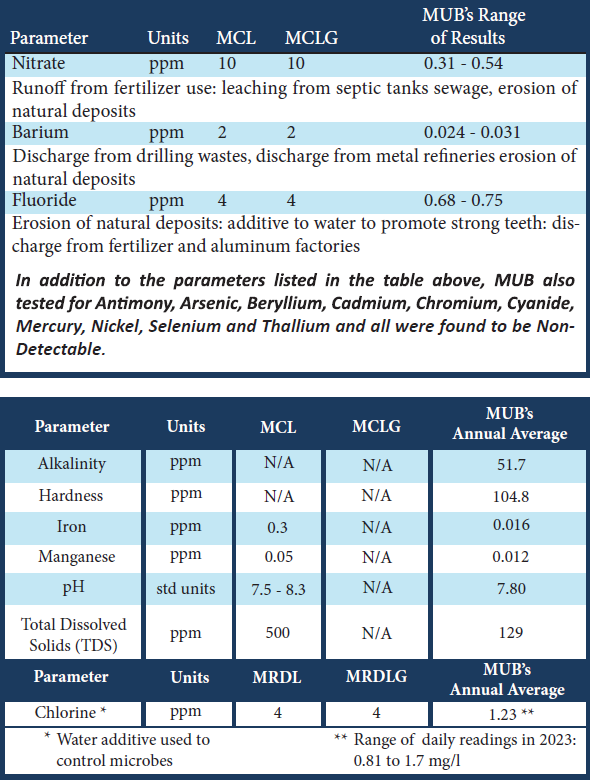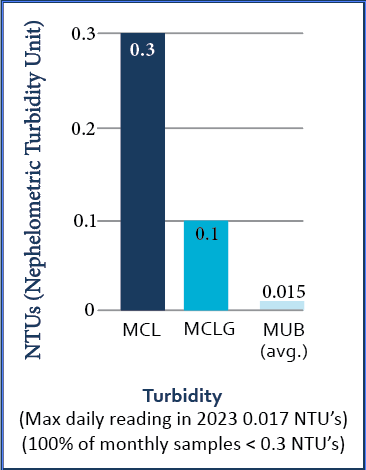Inorganic Chemicals, Turbidity, and Lead and Copper
Inorganic Chemicals
Inorganic contaminants, such as salts and metals, may be naturally occurring or the result of urban stormwater runoff, industrial or domestic wastewater discharges, oil and gas production, mining or farming.
The tables below present our testing for inorganic chemicals, including the likely sources of contamination for each parameter. Values listed as ND (non-detectable) were too small to be detected. Non-detectable means that the amount present, if any, was so small that it cannot be detected using the prescribed testing protocol established by the United States Environmental Protection Agency. That result is excellent and is what we would expect. One part pr million (ppm) means that one pound of a substance can be detected in a million pounds of water. In other words, one part per million is approximately one drop per 10 gallons of water. One part per billion (ppb) is approximately one drop per ten thousand gallons of water.


Turbidity
Turbidity is generally thought of as the cloudiness of water. It is one way to measure the removal or inactivation of certain targeted microorganisms. At high levels it can impair the disinfection process.
Lead and Copper
Lead and copper analysis is performed once every three (3) years, on water samples throughout our water distribution system. Our analysis for 2022 showed that the 90th percentile of the ranked analysis results were, 1.1 ppb for lead and 0.0136 ppm for copper. All results were found to be well below the action levels as set by our state health department. Our next scheduled sampling for lead and copper is set for 2025. Results of our latest testing can be found at the below links:
Lead: https://mub.org/ccr/2022lead
Copper: https://mub.org/ccr/2022copper
If present, elevated levels of lead can cause serious health problems, especially for pregnant women and young children. Lead in drinking water is primarily from materials and components associated with service lines and home plumbing. MUB is responsible for providing high quality drinking water, but can not control the variety of materials used in plumbing components. When your water has been sitting for several hours, you can minimize the potential for lead exposure by flushing your tap water 30 seconds to two minutes before using water for drinking or cooking. If you are concerned about lead in your drinking water, you may wish to have your water tested. Information on lead in drinking water, testing methods and steps you can take to minimize exposure is available from Safe Drinking Water Hotline or at http://www.epa.gov/safewater/lead.